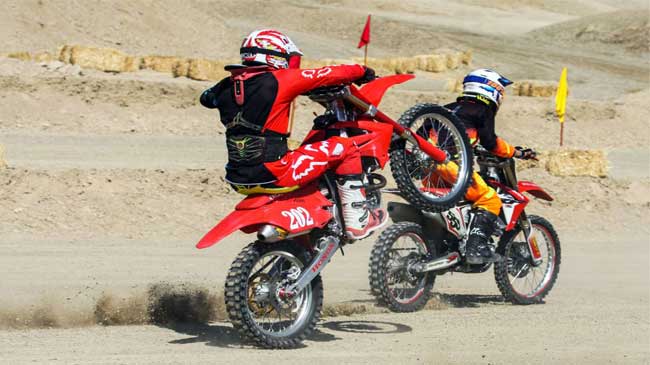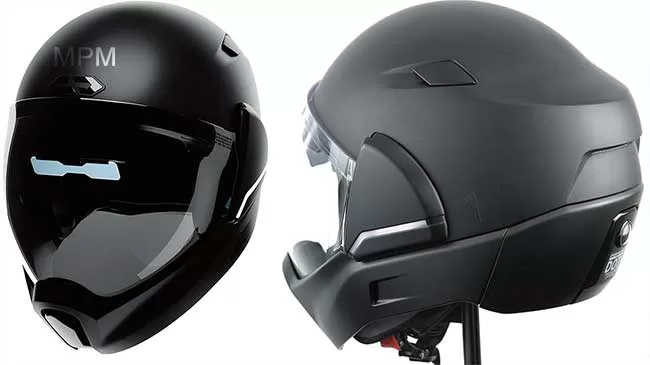A motorcycle helmet is an indispensable safety equipment when riding a motorcycle. It effectively protects the rider’s head from accidental injuries, reduces wind noise, and protects the eyes from splashes. Helmets simply make sense whenever you ride and some places have laws requiring them. Therefore, it is important to choose a motorcycle helmet that suits you. So, how would you like to choose a helmet that suits you?

You may have noticed the variety of helmets available in the market, including full-faced, half-faced, modular, off-road, and more. To begin, it’s important to determine your specific requirements and what makes you most comfortable. For bikers, a full-faced helmet is often the preferred choice, whereas a half-faced helmet may be suitable for scooter riders. Off-road helmets may have a sporty appeal and look great on many street bikes. Modular helmets offer the combined protection and convenience of both full-faced and half-faced helmets. It’s advisable to try out different helmet styles and not make a decision based solely on appearance.
In many countries, motorcycle helmets need to be certified before they can be sold and used on the market. These certifications are usually performed by government agencies or specialized certification bodies. Some common motorcycle helmet certification standards include:
The certification standard issued by the U.S. Department of Transportation (Department of Transportation) ensures that the helmet meets U.S. safety standards.
The certification standard issued by the Economic Commission for Europe ensures that the helmet meets EU safety standards.
The certification standard issued by the non-profit organization SNELL (Snell Memorial Foundation) conducts more stringent safety tests on helmets.
Certified motorcycle helmets usually meet specific safety standards, which means they undergo a rigorous series of tests to ensure they provide the best protection for the rider in an accident. These tests typically include requirements for helmets in areas such as impact, penetration, visibility and comfort. When purchasing a motorcycle helmet, it is important to ensure that you choose one that meets local certification standards as this can help ensure the safety and quality of the helmet.

When choosing a motorcycle helmet, it’s important to look for helmets that meet safety standards and are made from high-quality materials to ensure proper protection. Different helmet manufacturers may use proprietary materials and construction techniques, so it’s essential to select a helmet from a reputable brand with a good safety track record. The linked article below offers an in-depth analysis of the materials utilized in motorcycle helmets.
The coverage area of a motorcycle helmet typically includes the entire head, from the forehead to the base of the skull and extending to the ears and sides of the head. This comprehensive coverage is designed to protect the most vulnerable areas of the head in the event of a crash or collision. Additionally, some helmets may include a visor or goggles to protect the eyes and face from debris, wind, and other potential hazards. So if safety is your top priority, ask about the helmet’s coverage area when purchasing.
The sun shielding plate does not protect the eyes and protects the eyes from light and dazzling effects, provides high efficiency and safety, and is usually made of anti-oxidant materials or other anti-oxidant plastics, thereby providing optical transparency and protection. A mechanism that has a high or low surface with a certain amount of equipment, and a different light line condition and a manual pleasure. Transparent with sunscreen and a variety of colors available. The color of the face is important when choosing one’s self-esteem. It is very difficult to change the viewing power of the dark-colored mirror at night; however, transparent sunscreen is used to illuminate the sky. In addition to this, the ability to block the sun and board also improves the quality of life, and the ability to block the board. Therefore, if you buy a UV protection surface, the protection efficiency is better than the normal surface.

Helmet comfort is crucial for a rider’s overall experience and safety. A comfortable helmet should fit snugly but not too tight, and it should distribute pressure evenly across the head. Ventilation is also important to prevent overheating, and padding should be soft and moisture-wicking to enhance comfort during long rides. Additionally, the weight of the helmet can significantly impact comfort, so a balance between protection and weight is important. Ultimately, a comfortable helmet is one that the rider can wear for extended periods without discomfort, allowing for maximum focus and enjoyment while riding.
The fit of a helmet is crucial for ensuring safety and comfort. A properly fitting helmet should be snug but not overly tight, with no pressure points or areas that cause discomfort. It should sit level on the head, covering the top of the forehead and resting just above the eyebrows. The cheek pads should make contact with the cheeks, and the helmet should not shift or move excessively when the head is turned. Additionally, the chin strap should be securely fastened, allowing only one or two fingers to fit between the strap and the chin. A proper fit is essential for optimal protection in the event of an impact and for overall riding comfort.

When it comes to helmet styling, there are various options to suit individual preferences. Helmets come in a wide range of designs, colors, and finishes to match different riding styles and personal tastes. Some riders may prefer a classic, retro look, while others may opt for a more modern and aggressive aesthetic. Additionally, helmet manufacturers often offer a variety of graphics, patterns, and customizations to cater to different personalities and preferences. Ventilation systems and visor designs also contribute to the overall styling of a helmet, with some models featuring sleek, aerodynamic shapes and others sporting more rugged or distinctive profiles. Ultimately, helmet styling is a matter of personal choice, allowing riders to express their individuality while prioritizing safety and protection.
Join our mailing list to be the first one to know more new parts release and marketing info. Stay informed!


We will contact you within 1 working day, please pay attention to the email “wholesale@mpm-motorsports.com”
Comments